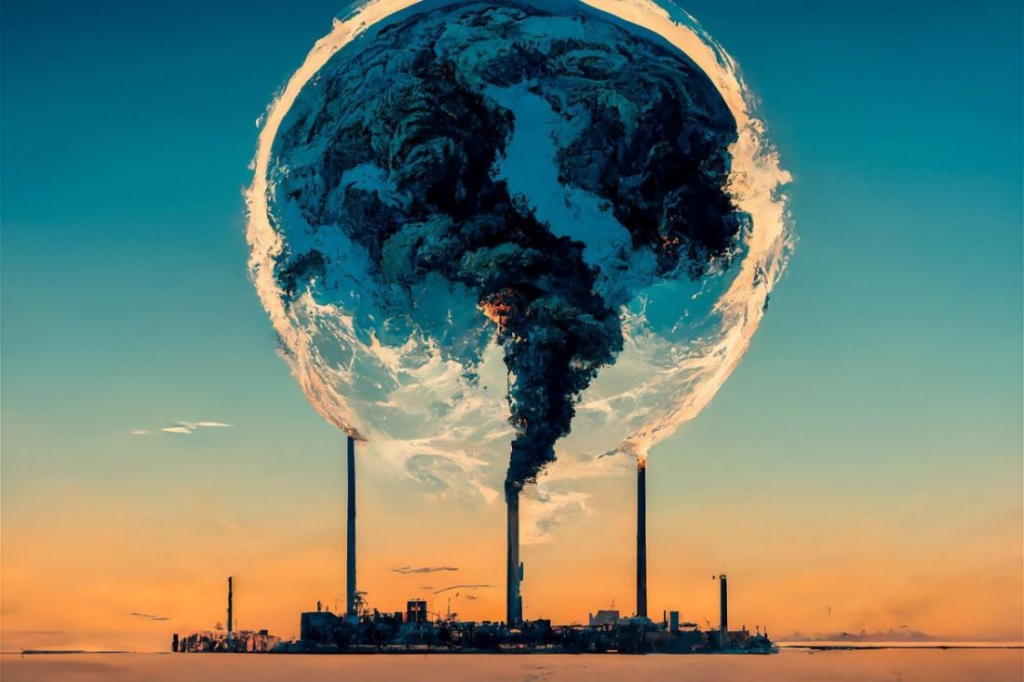Table of Contents
Climate change has become one of the most pressing global issues of our time. Understanding its science and the impact it has on our planet is crucial for addressing this challenge effectively. This article delves into the scientific principles behind climate change, its observable effects, and the implications for both the environment and human societies.
The Fundamentals of Climate Change
1. What is Climate Change?
Climate change refers to long-term alterations in temperature, precipitation, wind patterns, and other elements of the Earth’s climate system. While natural factors have historically caused climate variations, the current phase of climate change is primarily driven by human activities. This anthropogenic climate change is characterized by an accelerated increase in global temperatures and significant alterations in weather patterns.

2. The Greenhouse Effect
2.1. Natural Greenhouse Effect
The greenhouse effect is a natural process that warms the Earth’s surface. Solar radiation reaches the Earth, and some of it is absorbed while the rest is reflected back into space. The Earth’s surface then emits heat energy in the form of infrared radiation. Greenhouse gases (GHGs) in the atmosphere, such as carbon dioxide (CO₂), methane (CH₄), and water vapor, trap some of this heat, preventing it from escaping into space. This process maintains the Earth’s average temperature, making it habitable.
2.2. Enhanced Greenhouse Effect
Human activities, particularly the burning of fossil fuels (coal, oil, and natural gas) and deforestation, have significantly increased the concentrations of greenhouse gases in the atmosphere. This enhanced greenhouse effect leads to more heat being trapped, raising global temperatures and causing various climatic changes. The rapid increase in GHGs since the Industrial Revolution has accelerated the warming process, leading to significant environmental and societal impacts.
Observable Effects of Climate Change
3. Rising Global Temperatures
3.1. Temperature Records
One of the most evident signs of climate change is the rise in global temperatures. According to NASA, the average global temperature has increased by approximately 1.2°C (2.2°F) since the late 19th century. This warming trend is linked to increased GHG emissions and has been consistently recorded across various datasets and climate models.
3.2. Heatwaves and Extreme Weather
The increase in global temperatures has resulted in more frequent and intense heatwaves. These prolonged periods of extreme heat can have severe consequences for human health, agriculture, and ecosystems. Additionally, climate change has been associated with more frequent and severe weather events, including hurricanes, floods, and droughts, disrupting communities and natural systems.

4. Melting Ice and Rising Sea Levels
4.1. Polar Ice Melt
The warming climate is causing significant ice loss in polar regions. Both the Arctic and Antarctic are experiencing rapid ice melt, with glaciers and ice sheets contributing to rising sea levels. The Arctic sea ice extent has declined dramatically over recent decades, affecting polar ecosystems and contributing to global sea level rise.
4.2. Sea Level Rise
As ice melts and ocean waters expand due to warming, sea levels are rising. According to the Intergovernmental Panel on Climate Change (IPCC), global sea levels have risen by approximately 20 cm (8 inches) since 1900. This rise poses risks to coastal communities, leading to increased flooding, erosion, and saltwater intrusion into freshwater sources.
5. Changes in Ecosystems and Biodiversity
5.1. Disruption of Ecosystems
Climate change affects ecosystems by altering temperature and precipitation patterns. These changes disrupt plant and animal habitats, leading to shifts in species distributions and the timing of biological events such as migration and flowering. For example, some species may migrate to higher altitudes or latitudes in search of suitable conditions, disrupting local ecosystems and food webs.
5.2. Loss of Biodiversity
The rapid pace of climate change poses a threat to biodiversity. Many species are struggling to adapt to changing conditions, leading to habitat loss, population declines, and, in some cases, extinction. Coral reefs, for example, are highly sensitive to temperature changes and are experiencing widespread bleaching and mortality due to rising sea temperatures.
Implications for Human Societies
6. Impacts on Agriculture and Food Security
6.1. Altered Growing Conditions
Climate change affects agriculture by altering growing conditions, such as temperature, precipitation, and soil moisture. These changes can reduce crop yields, affect the quality of produce, and increase the risk of pests and diseases. Regions that are highly dependent on agriculture may face food insecurity as a result of declining agricultural productivity.
6.2. Water Resources
Changes in precipitation patterns and increased evaporation rates due to higher temperatures can impact water resources. Reduced snowpack and altered rainfall patterns can affect the availability of freshwater for drinking, irrigation, and hydropower generation. This can lead to water shortages and increased competition for resources.
7. Health and Human Well-Being
7.1. Heat-Related Health Issues
Rising temperatures and more frequent heatwaves can lead to heat-related health issues, including heat exhaustion and heatstroke. Vulnerable populations, such as the elderly and those with pre-existing health conditions, are at higher risk. Additionally, climate change can exacerbate the spread of vector-borne diseases, such as malaria and dengue fever.
7.2. Displacement and Migration
Climate change-induced extreme weather events and sea level rise can lead to displacement and migration. Communities in vulnerable areas may be forced to relocate due to flooding, hurricanes, or other climate-related disasters. This displacement can create social and economic challenges, including loss of livelihoods, increased pressure on urban areas, and potential conflicts over resources.

Conclusion
The science behind climate change reveals a complex interplay of natural processes and human activities that are driving significant changes in the Earth’s climate. The observable effects of climate change, including rising temperatures, melting ice, and disruptions to ecosystems, have far-reaching implications for both the environment and human societies. Addressing climate change requires a global effort to reduce greenhouse gas emissions, adapt to changing conditions, and support communities in managing the impacts. By understanding the science and recognizing the urgency of the issue, we can work towards solutions that promote a sustainable and resilient future for our planet.


